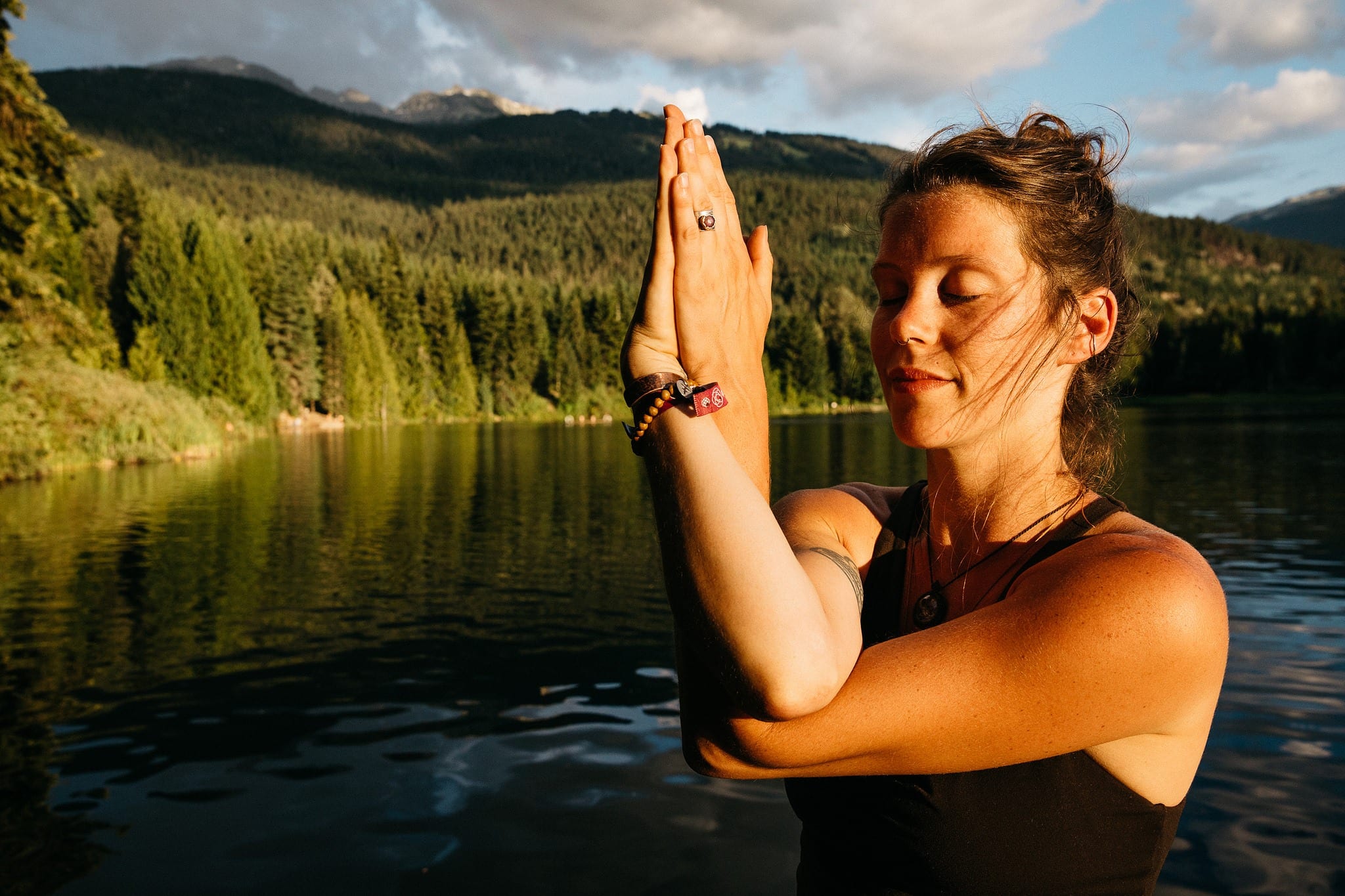
Last year I spent several months with a little bit of what I feel is best described as «soul-searching» in regards to my yoga practice.
As a yogini, a student of yoga and a yoga teacher for more than five years, my practice and I have been through more than any other relationship I have ever been in. My practice has been my rock through thick and thin, my safe-space, my feeling- space, my creative-space and in many ways my closest friend. As I have changed, evolved and grown over the years, so has my practice, and my relationship to yoga and it’s many aspects.
For years, my yoga practice was rather physical. My first few yoga teachers were all ashtanga teachers, and so I was thrown into a world of postures, performance and dedication. And that is how I first fell in love with yoga. I loved seeing how capable our bodies are; how it adapts, changes and evolves with our practice and lifestyle. Furthermore, I loved observing how my inner state of being always (always!) was reflected back to me as I stepped onto my mat in the morning for my series of Surya Namaskar.
When I was in recovery from a decade-long addiction and eating-disorder, my practice was there to give me more space, more room to be; to breathe, to cry and to release. A place for me to really, really feel. And from there learnt how I could use asanas as a tool to get out of my head for a little while, to allow myself to be more in my body. It has been a beautiful, powerful journey, and my yoga practice has no-doubt saved me from myself and my own inner daemons many a time.
However, half a year ago, I noticed something had shifted. I didn’t necessarily look forward to stepping onto my mat in the morning like I used to. And so I would post-pone my practice for the evening, but when the evening arrived, I still wasn’t feeling it. I kept persisting in my practice most days though, thinking it was just a phase, a phase I was willing to wait out. I told myself, as the yogini I am, that things come and go, and perhaps I just needed to push through. Perhaps change things up a little? Give myself new challenges. Seek more inspiration. Simply sit with it.
Because regardless of how I felt before I did my practice, I would always feel better once it was done.
Maybe that was the thing though. It eventually became clear to me that my practice these days more often than not felt like something I wanted to be over with. As if it was yet another chore waiting to be done. Something I had to tick off my list in order to get on with my day, with my life.
Perhaps this was the biggest realisation. Seeing how a practice I had adored and relied on for years, who had been my closest friend for so long, now seemed more like that not-so-pleasant neighbour that keeps bothering you, and that you have to deal with, just to get your sense of peace and quiet to enjoy your life.
I’m not having it, I thought. I refuse to let something that’s been so wonderful for years, so wonderful in fact, that I made it not just part of my morning routine, it was (is) my passion, my lifestyle, my career. And so I thought, «now is a very bad time for me to realise that this is not what I want to be doing with my life.
And I guess this is where I started digging a little deeper. Looking a little further. Asking myself what is really going on here?
Well, it us true what they say; Ask and you will receive.

Not long after I started my quest to fall recklessly in love with yoga again, I stumbled upon a book that has been nothing less than life-changing for me. If you’re a yogini, a female yoga teacher, if you’re a woman, or if you’re simply practicing and/or teaching yoga with/to women, I can highly recommend this book. It is a game-changer.
A few chapters into Yoni Shakti, I thought to myself that «no wonder I haven’t felt good about my practice for a while. I am, and have been for a long time, practicing the wrong kind of yoga». I have been committed to a promise I made to myself a few years ago; that I will always seek out, learn and be open to become a more softer, caring and loving person; as a daughter, a friend, as a sister and as lover. And of course in my relationship to myself. But then I began to realise, that over the years, I have also been practicing a form of yoga that in many ways went against all of this.
My practice was until this stage very physical; mostly Yang-based. In other words, it was definitely masculine practice. It was more than anything about dedication, discipline, consistency, and, as much as I hate to admit it, also about performance.
The next following months led me on a journey into the feminine that exists within the yoga world. I started diving deeper into the beautiful world of softer styles of yoga; yin and restorative yoga, Shakti-yoga, slow-flow and yoga Nidra. I spent days researching the history of women in yoga, reading about practicing in tune with our menstrual cycles, and how we can use yoga to empower ourselves as women; as mothers, daughters, sisters, friends and lovers. And as practitioners of the yogic traditions.
Perhaps for the first time, I was giving myself full permission to practice and flow with the natural rhythms of my own cycle.
«it is not necessary to have a womb to practice ‘womb yoga’, in all phases of womens lives, it is the presence of womb space energies, the energies of «Yonisthana Chakra», which has a capacity to provide deep intuitive wisdom, and to reconnect us with the earthed and watery energies of creativity, fluidity, nurture and fertility that are characteristic of this energy centre.» – Uma Dinsmore-Tuli, Yoni Shakti
From the wisdom born from connecting to our wombs follows a naturally arising global green consciousness rooted in a sustainable and respectful honouring of the natural cycles and energies of the earth, the womb that nurtures all life in our world. So it is through this wisdom, this spiritual awareness that is literally encoded in the cycles of the female body, that we can access the deep healing that our planet urgently calls for now. We are in deep need of exactly such yoga.» – Uma Dinsmore-Tuli, Yoni Shakti
The excerpts from above simply resonates with me on so many levels. I swear that if Uma herself had been in the room with me as I read this the first time, I would have had no choice but to walk over and kiss her. The excerpt from above simply resonates with me on so many levels. I swear that if Uma herself had been in the room with me as I read this the first time, I would have had no choice but to walk over and kiss her.
And so this is what my practice has been about the past few months: Finding a feminine and soft approach to asana practice. Reconnecting to feminine qualities of fluidity, flow, creativity and nourishment. Cultivating softness, intuition and deep listening in my yoga.
And let me tell you this: it has felt so good.
I believe these last six months has taught me how to develop a greater respect and understanding of yoga as a practice that revolves around cycles. How our cyclical practices inspires cyclical living, and helps us connect to the ever changing cycles of Mother Earth herself.I believe that in giving ourselves, as teachers and students, not to mention practitioners, permission to flow with our natural cycle (especially, but not exclusively, for women) we will in turn change the way in which we practice, think and feel, about yoga. Right now it feels like a precious little gift that was given to me, and for the first time in a long time, yoga has again become my best friend. And our friendship has grown much deeper roots and reached beautiful new heights.
So there are many aspects of our modern way of practicing yoga that unfortunately disconnects us female practitioners from our wombs and cycles. And «it is because of our profound disconnection from our own inner sense of what is right for us that we choose to practice forms of yoga which further disempower us (as women). When we adhere rigorously, and without regard for our own lifecycles, to those versions of yoga practice that focus on maintaining power over the body, rather than power moving through the body, then we imprison ourselves.» – Uma Dinsmore-Tuli, Yoni Shakti
We know that menstruation is a time of month where women should avoid most standing yoga postures, inversions, or any other vigorous forms of practice and movement. However, this does not mean we have to avoid practicing all together. Creating and practicing a sequence of seated and lying down-asanas, with gentle twists, can be of great benefit this time of month. We’re looking at finding postures that will encourage a positive experience as a bleeding woman, and for this time of month to be a cleansing, quiet and rejuvenating period. We need to find ways in which to cultivate responsiveness to the cyclical changes in our bodies, as this is, without doubt, an important aspect of our yogic awareness.

I want to teach fluid styles and sequences of yoga; a beautiful balance between fluid sequences and deep resting poses. Movement and stillness. Cultivating the ability to listen to our bodies wisdom of when to move, and when to be still.
«Yoga came to the west to change the west. But the west has changed yoga. We have created forms of yoga in the image of our own disconnection. Practicing this simply mirrors our own disregard for our own inner guide». – Uma Dinsmore-Tuli, Yoni Shakti
—

My name is Iselin. I was born during a tropical summer night twenty two years ago during a June full moon. I like walking barefoot, putting flowers in my food, writing poetry, playing with children and long walks in the forest. Follow her on Instagram.